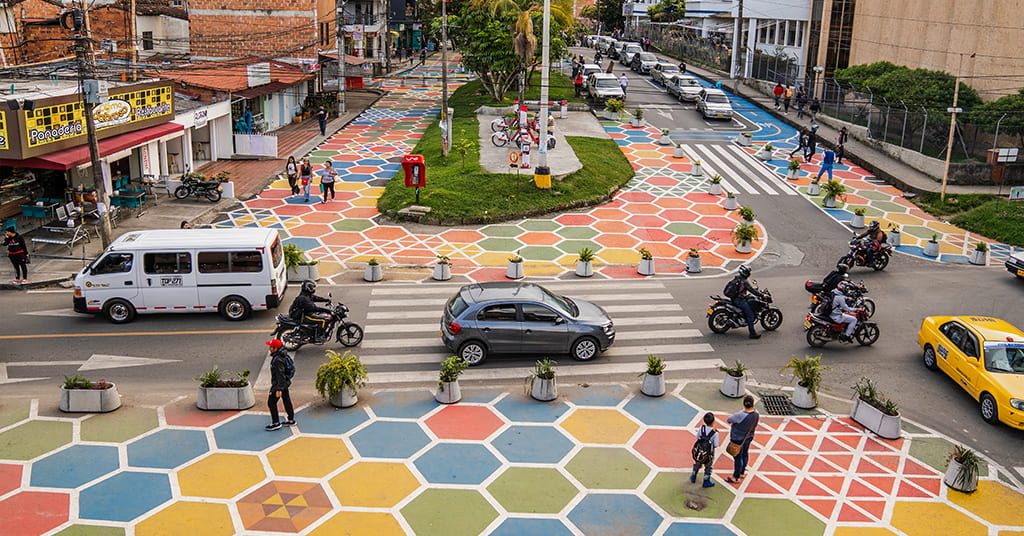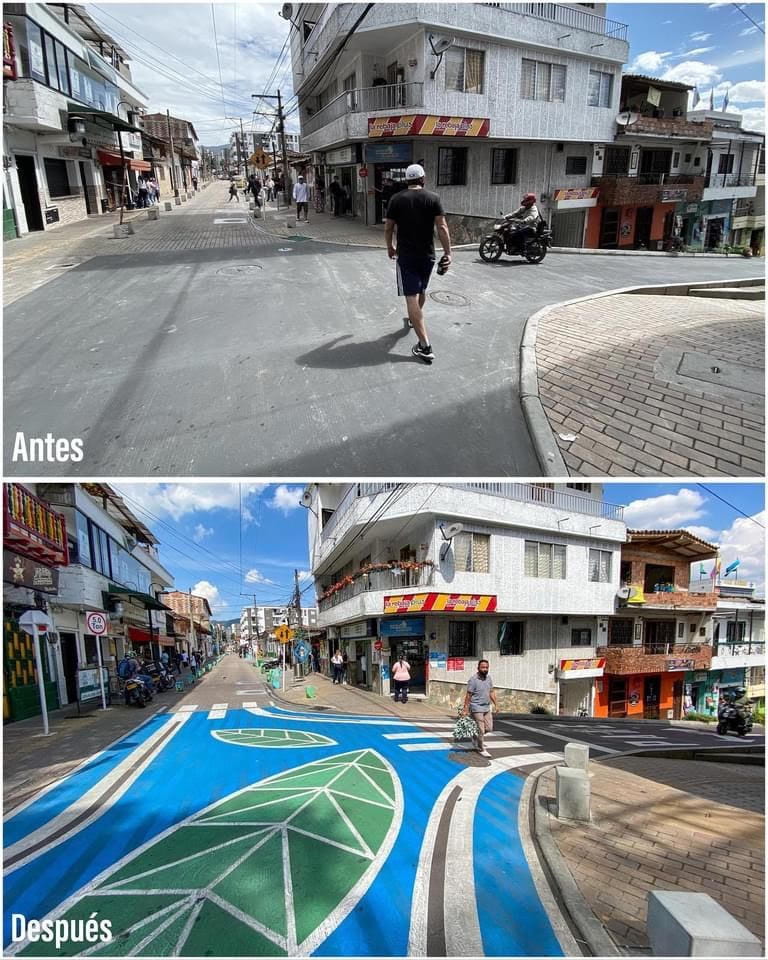
Much is said about quantitative deficits and little about qualitative ones. It is true, quantities matter and are crucial to meet the needs of housing, infrastructure, and public space, among other topics. However, the coverage of this equipment has already reached very high figures that now the concern has turned towards its quality. In this sense, tactical urbanism was born and has been positioned as a response to these concerns to improve the quality of life for all through small, specific, local, and low-cost interventions.
Tactical urbanism produces a variety of benefits and positive externalities in cities. In the first place, being a local project, at the neighborhood level, it is a process that involves the community, thereby generating engagement and allowing greater ownership. The pedestrian becomes then the center of these interventions on a human scale. Second, this tool is inexpensive, focuses on details and its impact is seen in the short term, hence much of its appeal. Third, these are experiments whose implementation is rapid, and they are constantly adapting, socializing, and improving.
But what are some examples of this approach? Perhaps the most well-known intervention in the world is the transformation of Times Square in New York. With the pedestrianization and demarcation of its streets, as well as the implementation of innovative and flexible urban furniture, this once noisy and polluted area became the busiest cultural and commercial intersection on the planet. In Colombia, and with the support of the Inter-American Development Bank, municipalities such as Rionegro and La Estrella near Medellin, have become models of this type of urban planning. Through color, signage, simple street furniture, plants, and an important civic education component, the streets have been transformed for the benefit of the entire community. Indicators of safety and civism, as well as in economic matters of the commercial premises around these areas, demonstrate their effectiveness.
 Image: “Before” and “After” in La Estrella, Antioquia (Source: Taller ARQUIURBANO + Fundación Pintuco)
Image: “Before” and “After” in La Estrella, Antioquia (Source: Taller ARQUIURBANO + Fundación Pintuco)
Although there are those who oppose these processes because they seem superficial, short-term, and circumstantial, the truth is that their benefits and impacts are more than their disadvantages. It is true that tactical urban planning has a temporary component, but this aspect can be used in favor of experimenting and generating pilots with this type of flexible tools that adapt to the characteristics of each area to be treated. Although tactical urbanism is not a panacea, it is a vital component that can complement other urban strategies that allow the vision of cities to be achieved and landed. In addition, it is participatory and inspiring to look at and motivates us to continue building inclusive territories.
Finally, the pandemic has been the right time to continue investing in these types of techniques, as public space has become more vital than ever. Similarly, the neighborhood and the micro-scale are important because tactical urban planning ultimately seeks to improve people’s experience with public spaces. The city acquires a connotation of a living laboratory where you can engage with communities and experiment to achieve benefits of all kinds, hence the proliferation of recent interventions within the framework of tactical urbanism.
Cover Image Source: Ciudades Sostenibles (División de Vivienda y Desarrollo Urbano (HUD) del Banco Interamericano de Desarrollo)